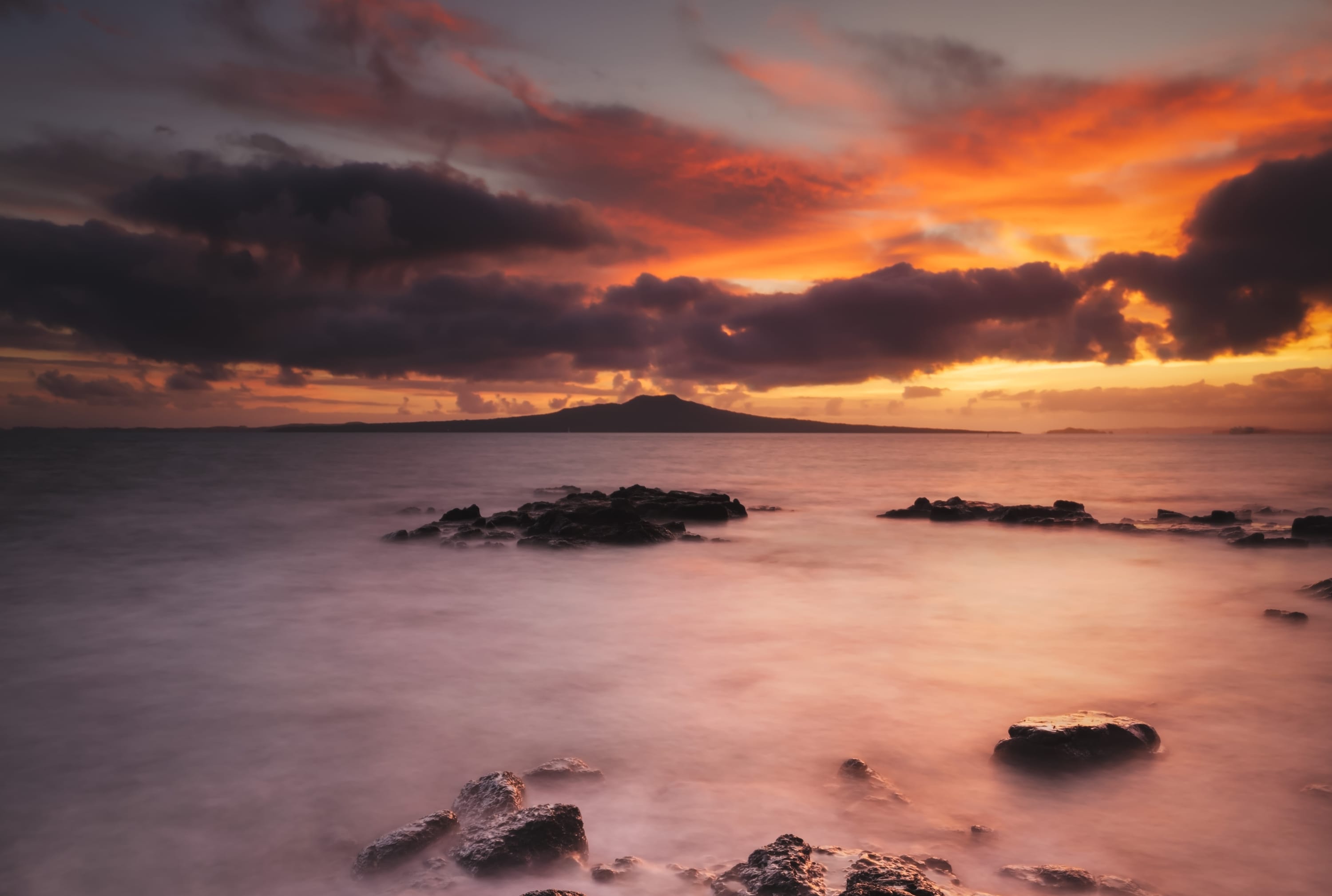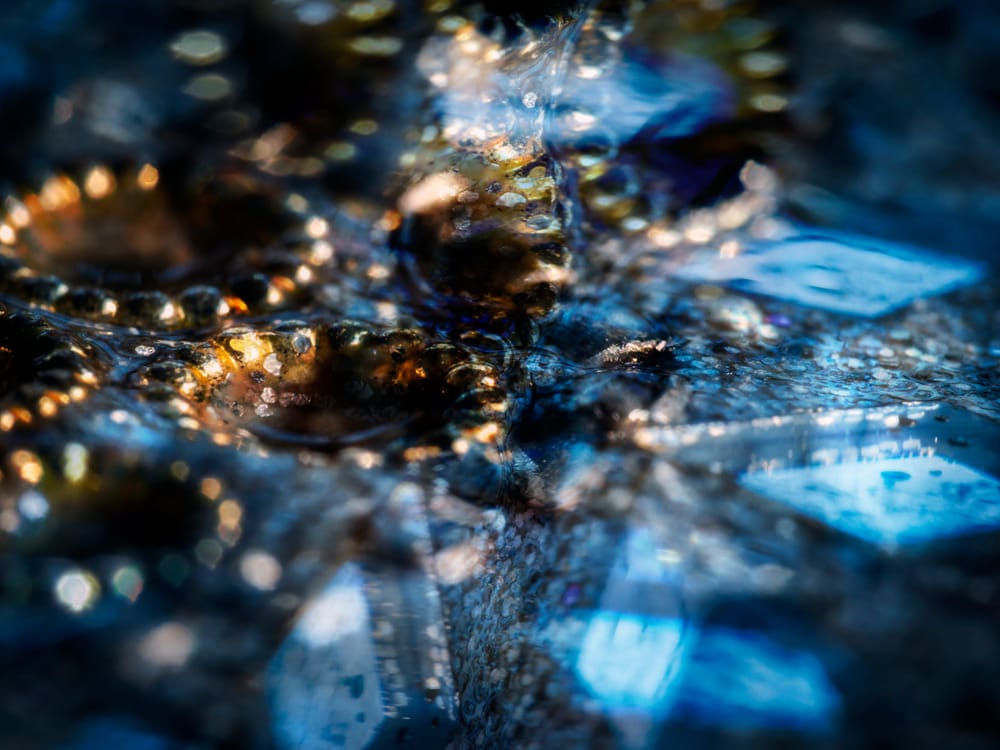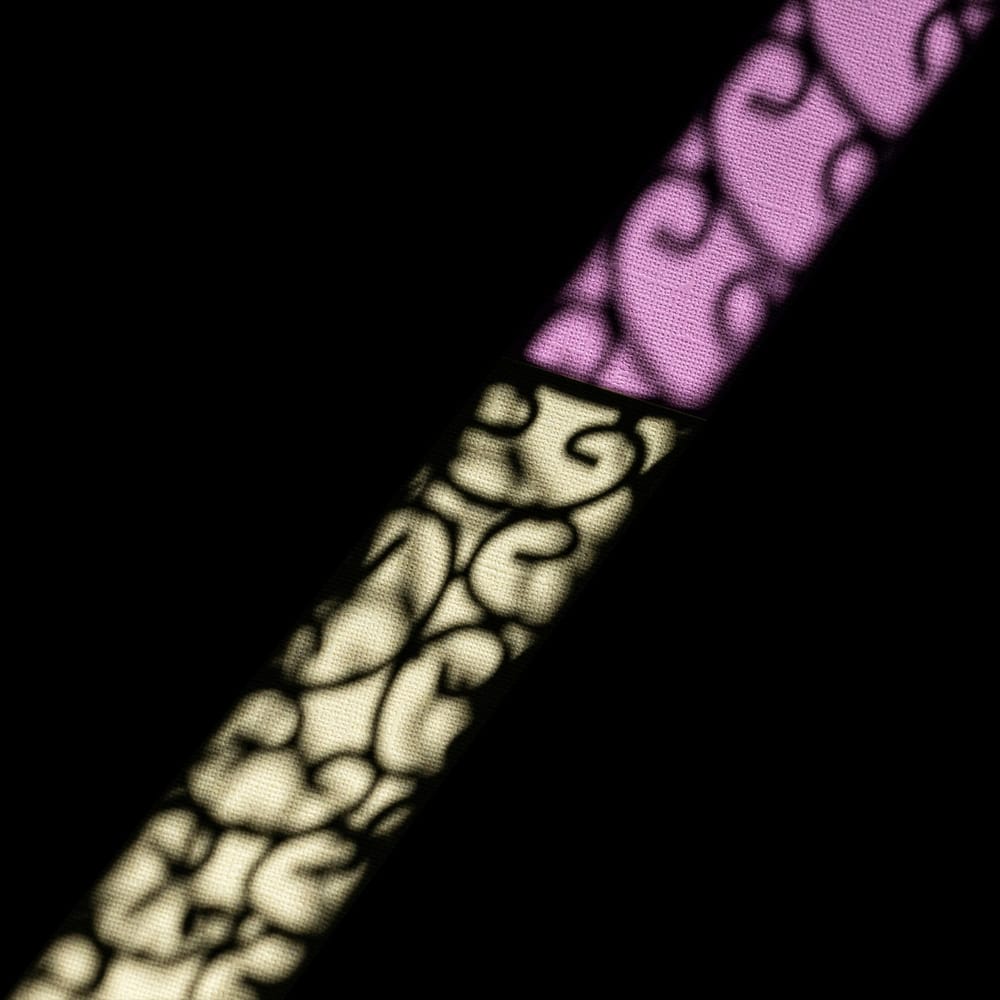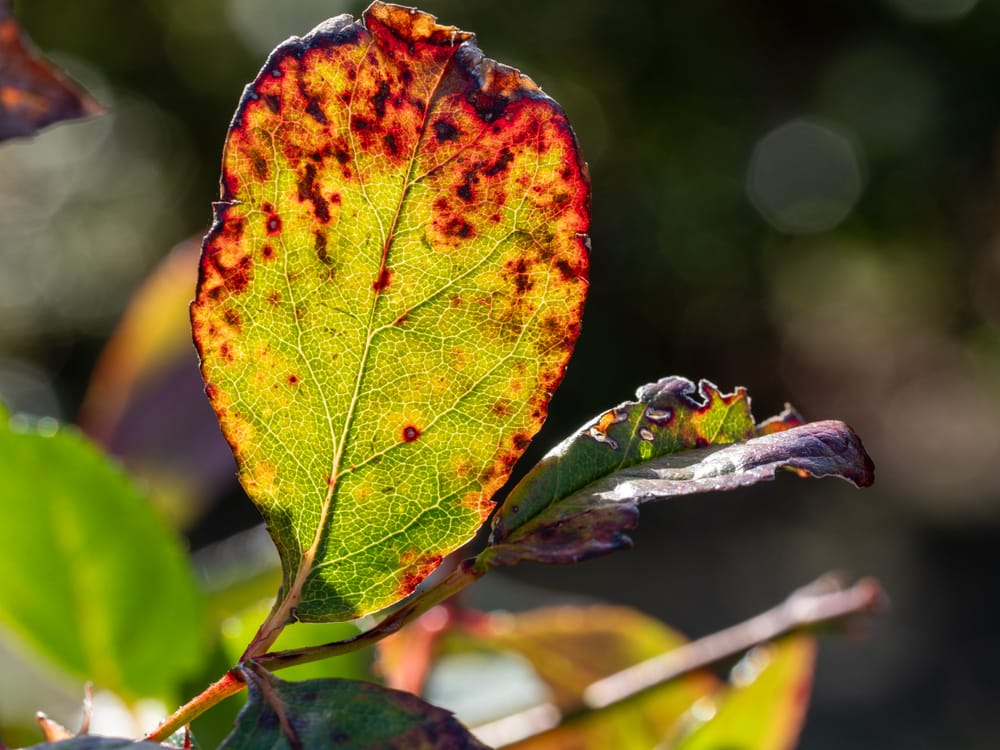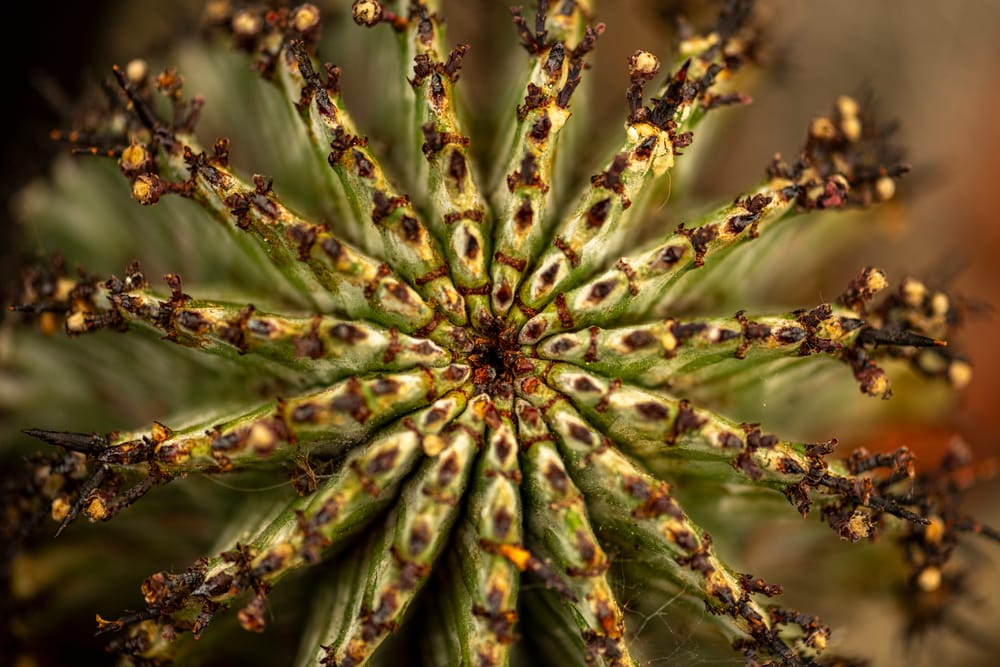Paul, how did you become a photographer?
It was actually a trip to Dunedin a few years ago for my Wife's graduation that started the photography flames burning, prior to that photography was never really on my radar. I had a Panasonic DMC-70FZ and was super keen to try and capture some of the bucket list locations around Queenstown afterward. I'd only tinkered a little with the Panasonic before the trip so I was still getting to grips with its capabilities and my own.
Most of the photography I had been focusing on was long exposure so I thought this was the right location to work on my skills, with all of the amazing locations all around me I couldn't fail right? I did... I was so focused on trying to reach the 8-second exposure limit my camera had that everything else went out the window, including composition. The only shot I took that I was truly happy with was of the Cromwell Bridge on our way out of Clyde to Queenstown, hard lesson learned! This experience, however, did not put me off and set me on the path of education, learning, where I went wrong to ultimately make me a better photographer.
How would you define your photographic style today?
If I was to put myself into a photography box it would definitely be seascape photography and long exposures. I love the sea, lakes, anything water-related really. I enjoy the control over waves, waterfalls, lakes, puddles, and any other water motion I can capture through the control of my shutter speed.
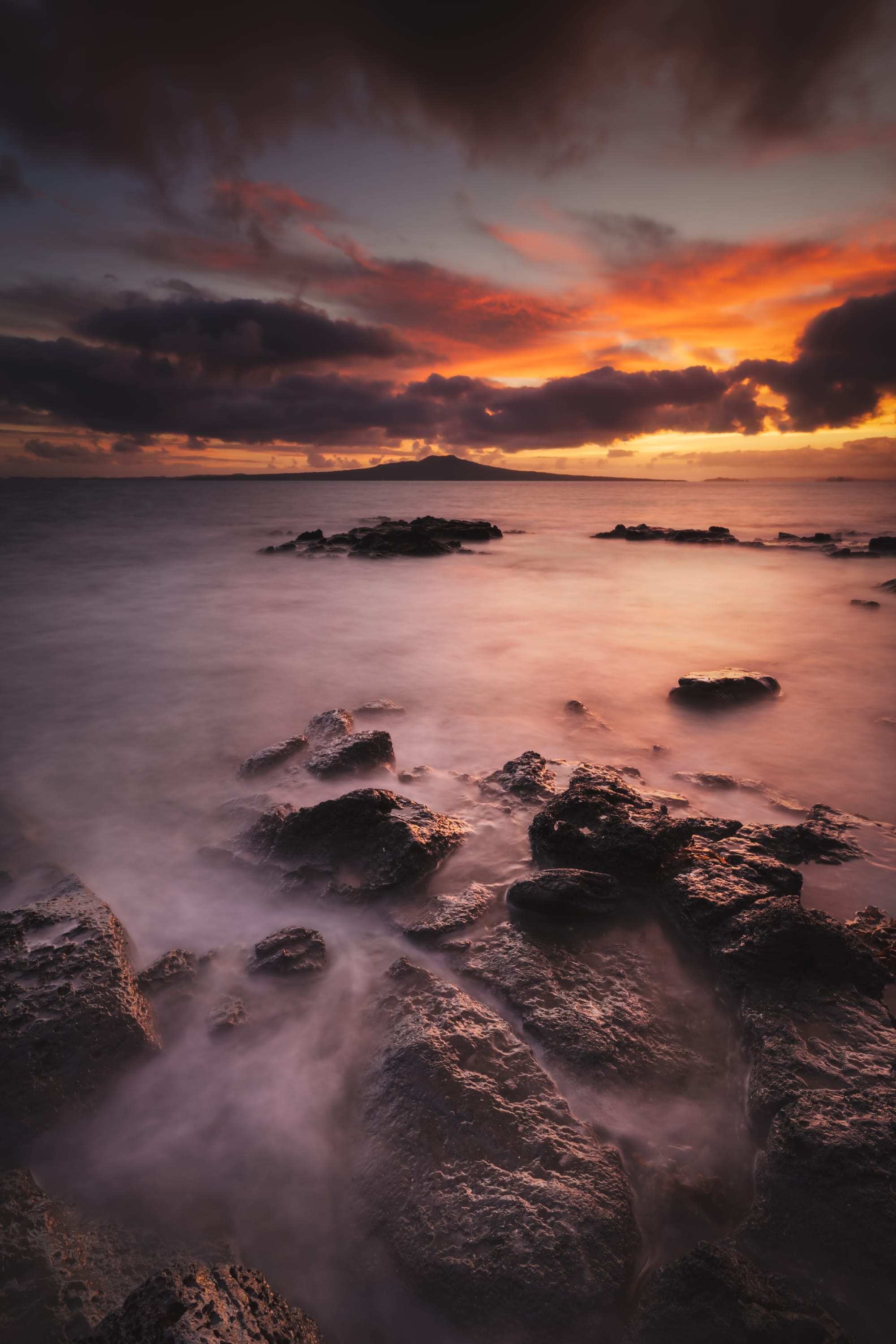
What inspires you to take photographs?
My inspiration is around me. Surrounded by the coastline here on the Hibiscus Coast, it was kind of obvious that would be my main subject. It was probably a nice parallel to where I grew up in Scotland, which was a seaside town on the West Coast called Largs. With a mixture of rock, sandy beaches, and hills that surround the town, it's very similar to where I live now.
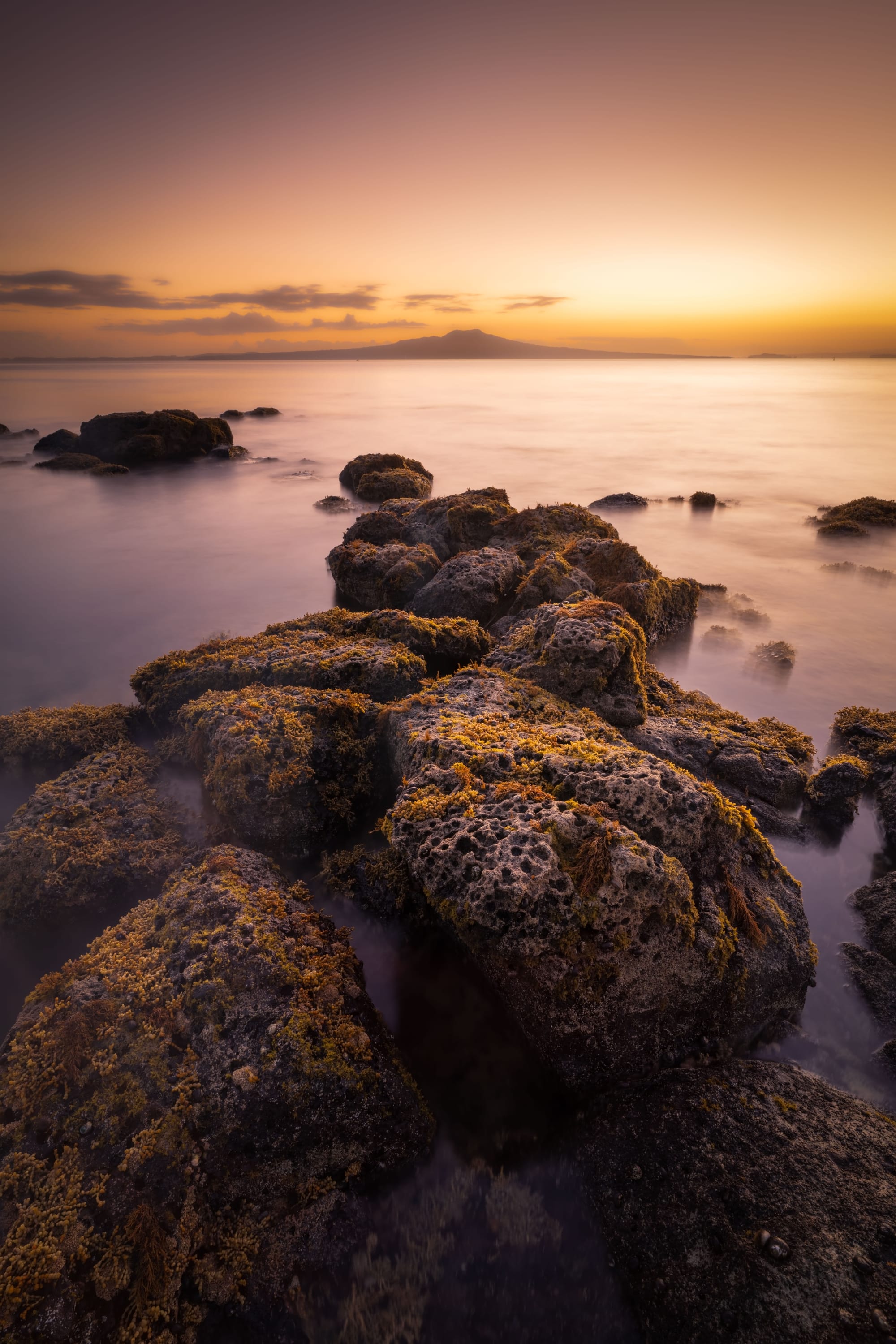
What is the hardest part of taking long exposure shots?
Ohhh, there are a few things that's for sure!
Light: This is the most important thing (well, I guess that's true for all photography) but with long exposure photography the light can be constantly changing (be it sunrise or sunset) so you have to always be aware of your exposure time and change it as the sun comes up or goes down, as the light comes and goes. You can always change your ISO or aperture if you're trying to maintain a specific shutter speed, so you need to be very aware of the exposure triangle and how ISO, shutter speed & aperture all work together to create a balanced exposure.
Stillness: If you're in a wooded area shooting a waterfall, you might want to slow the shutter speed down to a few seconds up to and beyond 30 if you're after that really smoothed out look. Trouble is if there's even a hint of a breeze, the leaves and branches of the surrounding trees will be blurry, which can be a bit distracting to the eye. This would then possibly require multiple exposures, one long exposure for the water and one faster shutter speed for the surrounding trees to then mask in, in-post. You may also have to focus stack depending on the depth of the scene from the foreground interest to the background.
Rushing water: You can sometimes think you have your tripod set hard and fast in the sand to then start a long exposure, only for a rogue wave (there are always rogue waves) to come along and knock your tripod just enough, resulting in a blurry photo. That might work in the abstract I guess, or ICM (intentional camera movement), but that's never my intention.
Tools: If you want to do daytime long exposure photography, unfortunately, you're going to need to purchase some accessories: an ND (neutral density) filter set-up. These can be pretty expensive although the filters at the lower end are not too bad, especially for starting out. They come in multiple stops of light, from 1 up to 10 stops and beyond. I mostly use my 10 stop for my seascapes.
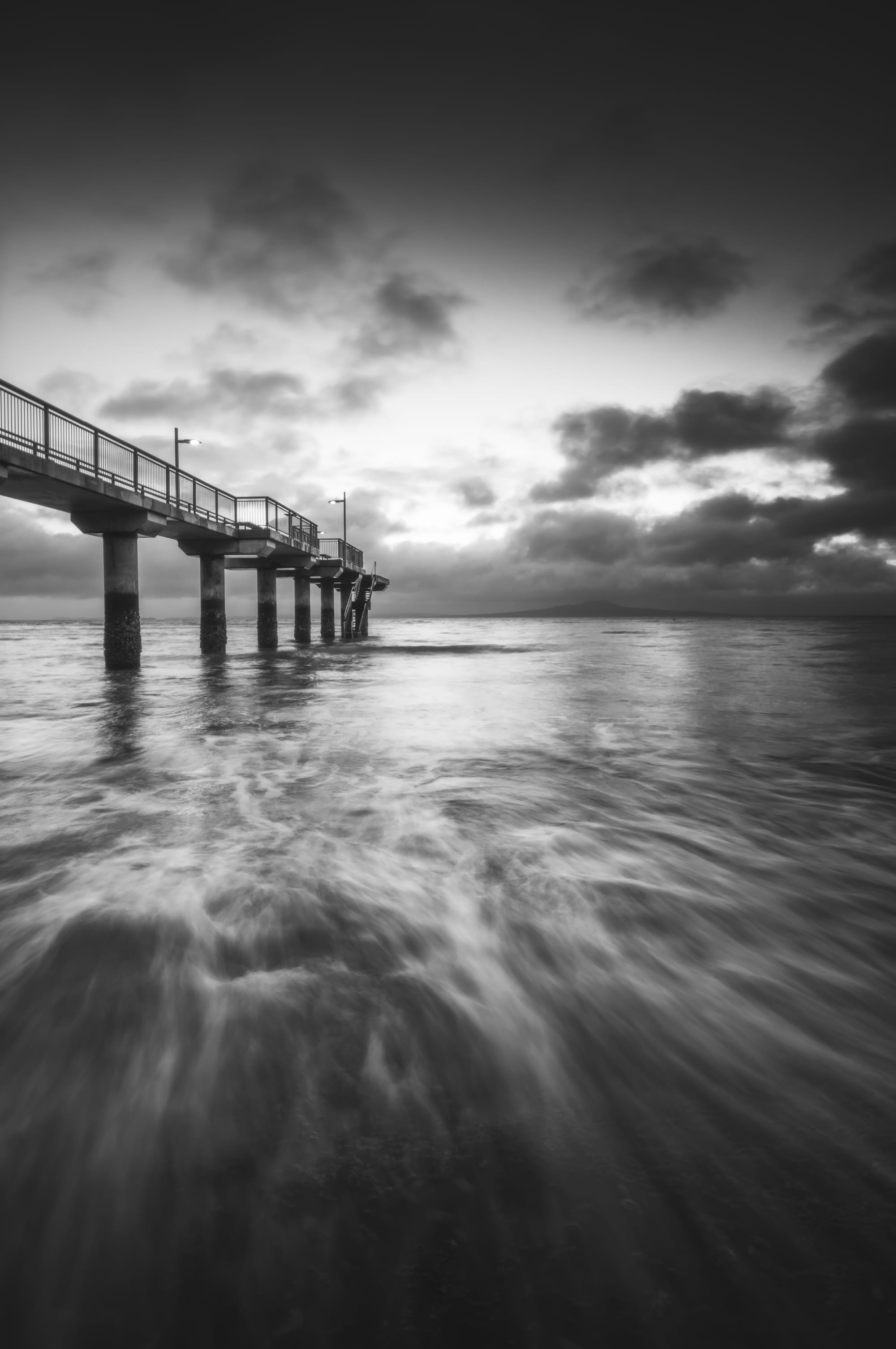
What are the biggest challenges you’ve faced, or still face, to get the photo you want?
There's a particular waterfall I've been trying to get a good shot of in my local area called Waterfall Gully in Shakespear Regional Park. I've tried around 7 or 8 times now to go out there during or just after a massive downpour, but I just don't seem to find the water flow I've seen from other photographers who shoot there. I'm beginning to think it can't be done - if it wasn't for the photographer's shot to prove it can be, I'd give up!
Does taking these kinds of shots hold a special meaning for you?
Absolutely! I have attempted a number of photography genres from macro, wildlife, Astro and a little portrait however I'm always drawn back to land / seascape photography. I think the connection or the special meaning to me is that it brings me back to my time spent growing up in Scotland. As I'm sure you'll recognise, Scotland offers some stunning photo opportunities, and my hometown is no exception. I grew up on the river Clyde in Ayrshire, in a wee tiny town called Largs. It has a west-facing coastline and hills that surround it, banked at either end of the town by two rivers that flow from said hills, the Gogo Burn and the Noodle Burn. If you follow these rivers up the hills you will come across waterfall after waterfall so numerous in number. In the winter, I know it's a wonderland of photographic opportunity. I just wish I had these skills and this passion back then. Oh, the photos I could have taken...
Do you follow any particular process when taking photos?
I generally plan where I'm going the day before if it's somewhere local. I check the tides and the weather; the tide is probably the most important part for me. If I want to do a long exposure shoot off the rocks at Takapuna beach for example and the tide is high at sunrise, I'm probably not going to have access to a lot of the contrasting igneous rocks that line the shoreline. I'd have been best waiting for a tide that's at least 2 hours out from high tide to give me a lot more options for my foreground interest. I make sure I get there in plenty of time before sunrise (with my torch), so I can pick out an outcrop of rocks that lead the eye to Rangitoto and the sunrise. The worst thing you can do is rush around. Once I've got my base composition I'll take a couple of test shots either on my phone or camera to make sure the composition works (to be honest, it's hard to go wrong on these rocks). Once I'm happy with everything I'll set my starting exposure for the light getting brighter and work back from there. I'll adjust the exposure time so I get a good mix of shots for the highlights and shadows to blend the exposures in post.
How do you continue to improve your photography and continue to learn?
I'm always learning from other photographers via YouTube, Instagram & Twitter. I'll see a style of photography that catches my eye and I'll try to deconstruct why the shot looks the way it does and then add some of those styles to my future shots.
I'll give another genre of photography a go and step out of my comfort zone too - most recently this has been cityscape photography. With cityscape photography you have to be very mindful of all the geometric shapes, so with lens distortion you then have to think about post-processing and whether you can fix heavy distortion or use it to your advantage for a more abstract look and feel.
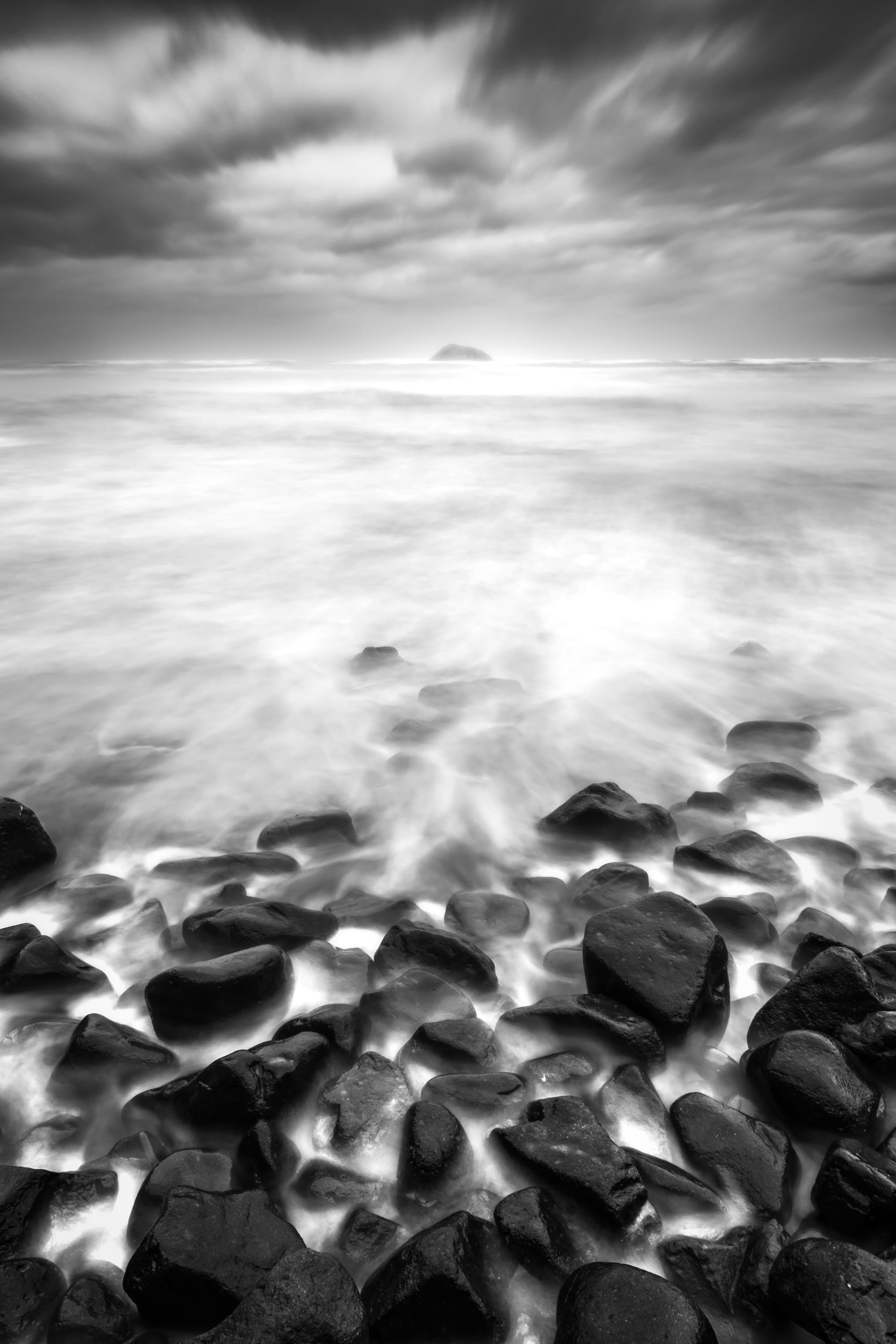
What advice would you give to people just starting out with long exposure photography?
Practice, practice, practice! Don't be afraid to make mistakes, just make sure you know what they are and learn from them. It may seem obvious, but always make sure your battery is charged before heading out, and do an inventory check before leaving. The last thing you want is to get to your location (that you have travelled hours to get to), only to find you've forgotten something pretty important, definitely a face-palm moment.
Education! I got mine mostly through YouTube by watching pro photographers in field masterclasses as well as post-processing lessons. Go out with an experienced photographer that's more than happy to show you the ropes. Get in touch with a professional photographer in your area that does 1-1 lessons. Don't forget a torch as you'll be out in the dark and possibly on unstable terrain at the beach, a broken ankle can really put a damper on things. Be patient, skills build over time, it's a marathon, not a sprint.
What post-processing techniques do you use to achieve these results?
I use Lightroom and Photoshop - I'll start basic processing in Lightroom and do the more complicated editing in Photoshop. I try to give myself as little work as possible by getting pretty much the exact shot I want in the field. The main things I'm doing in-post are clean-up based (spot removal), perhaps a crop to a 16/9 and bringing the flat raw file back to life again with colour grading, masking, and exposure blending. Sometimes I do panoramas, but very rarely.
What gear are you shooting with?
I use a Nikon D850 with lenses Tamron 17-35mm f2.8-4, Tamron 85mm f1.8, and Sigma 150-600mm f5-f6.3.
I have the NiSi V6 filter system kit which comes with a polariser, 0.9 soft graduated filter, and a 10 stop filter. I also have a shutter release, Sirui Carbon Fibre Tripod, cloths, dust spot remover, and torches (got to have a backup torch!)
Tell us the story behind one of your favorite shots...
My favourite shot was taken at my local beach - Red Beach. It is a special one for me as it represents my local beach perfectly and why it is called what it's called. I felt it was one of those mornings where everything just fit together so easily; the shells, the water, the light, the sky, it all just worked!
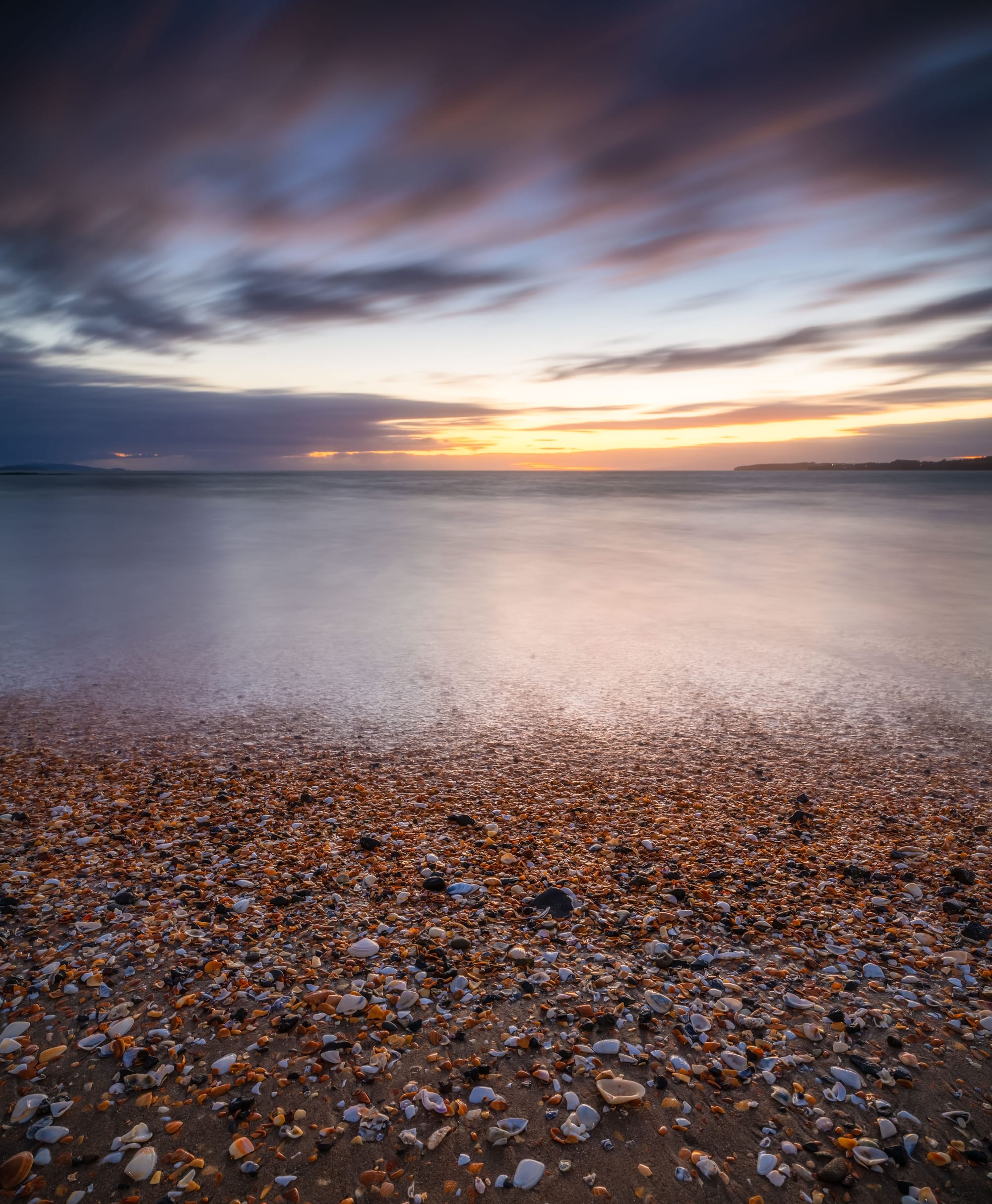
What else should we know about you?
Hmmm how about something a little left field for something a bit different... I used to be a competitive Powerlifter, specialising in Bench Press. I competed at the inaugural Arnold Classic in Australia in 2015 representing CAPO NZ and secured a 3rd lift of 195kgs giving me the then NZ record (not sure if it still stands).
Where can we find you online?
@paulbelli9 on Twitter and @paulbelliphotography on Instagram

